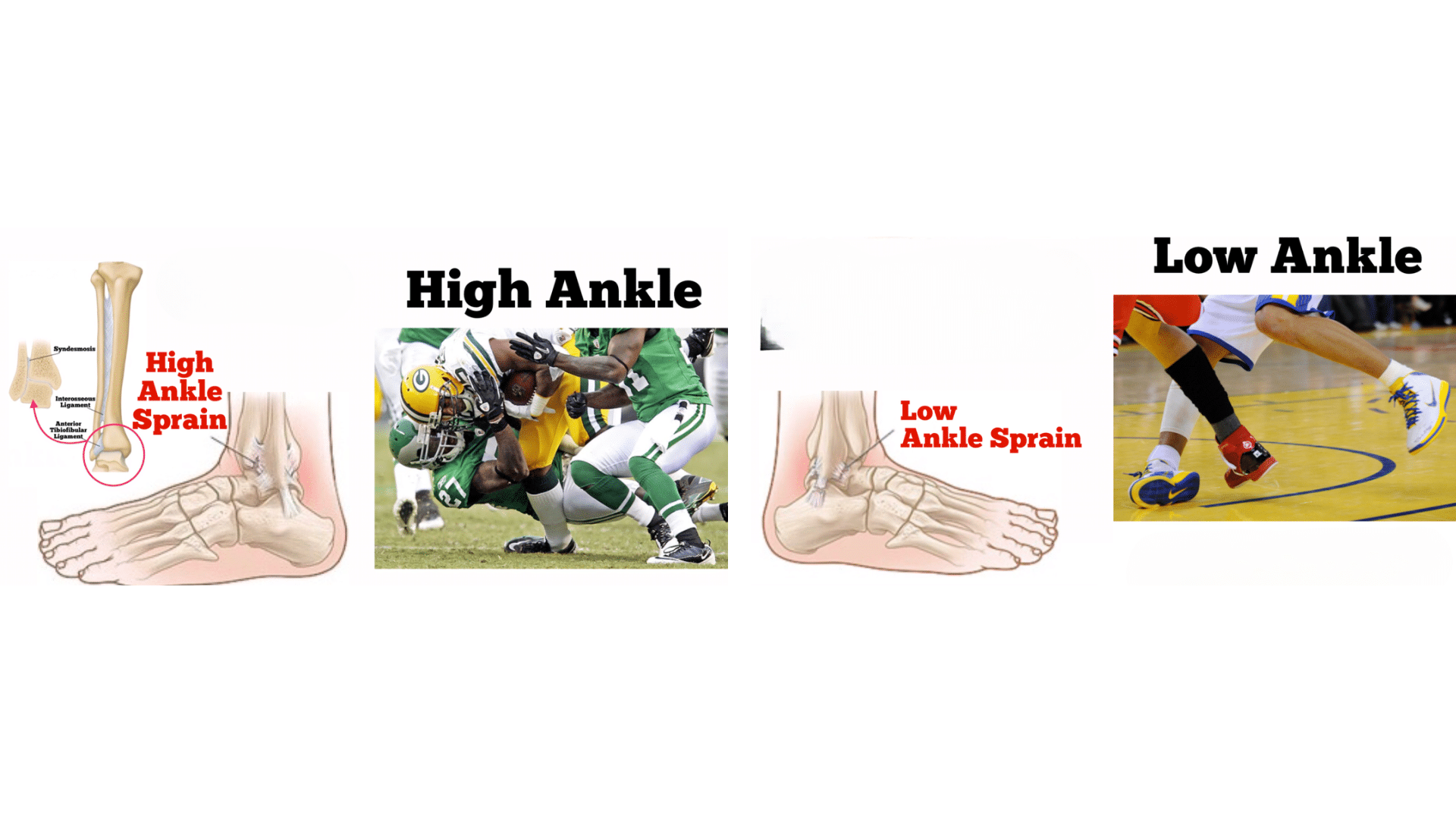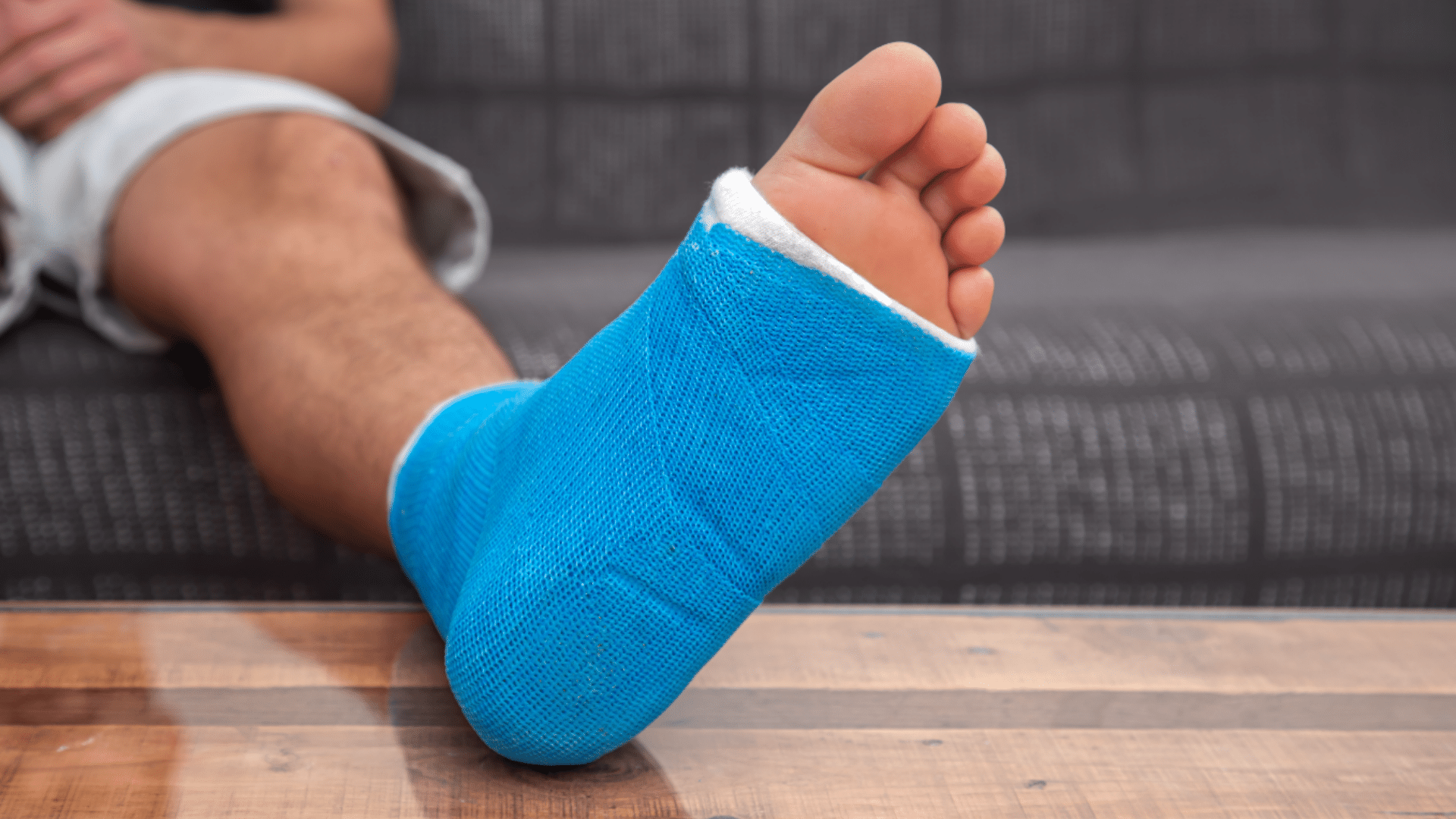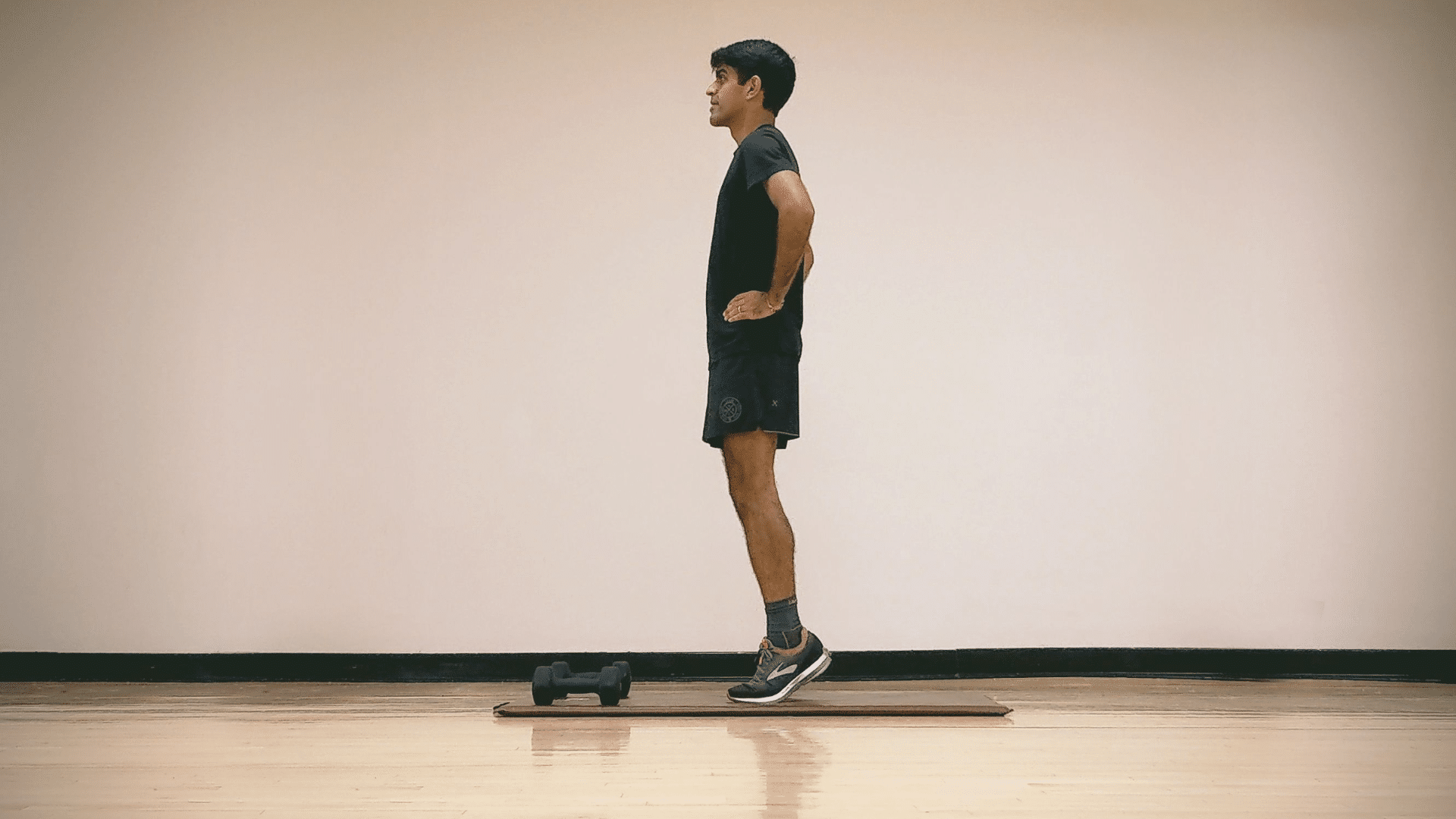I know how tough it can feel when an ankle injury slows you down and keeps you off your feet longer than you hoped. A high ankle sprain is different from a regular sprain, and because of that, recovery can take more time and patience.
If you’re dealing with this injury, you might be asking yourself how long it will take to heal, what the stages of recovery look like, and when you’ll finally feel steady again.
In this blog, I’ll share what you need to know about recovery time, treatment choices, and simple steps you can take to protect your ankle moving forward. By the end, you’ll feel more prepared and supported through the process.
What is a High Ankle Sprain?
A high ankle sprain happens when the ligaments that connect the tibia and fibula are stretched or torn. These two bones form the lower part of the leg, and the ligaments between them are important for keeping the ankle steady.
Unlike a regular ankle sprain, which affects the ligaments lower down on the outside of the ankle, this type occurs higher up near the shin.
The main signs include pain above the ankle joint, swelling that can extend upward, and bruising around the area. Many people also find it hard to put weight on the foot, and turning the foot outward can cause sharp pain.
High ankle sprains are most common in sports and activities that involve quick changes in direction, sudden stops, or heavy contact. They can also happen with slips, falls, or awkward landings that force the ankle outward.
High vs. Low Ankle Sprains

High and low ankle sprains differ in terms of where they occur, the duration of recovery, and the potential long-term consequences. Here is how they compare:
| Factor | Low Ankle Sprain | High Ankle Sprain |
|---|---|---|
| Location of Injury | Affects ligaments on the outside of the ankle | Affects ligaments between the tibia and fibula |
| Recovery Time | Heals in about 1–3 weeks | Often requires 6 weeks or more |
| Severity of Impact | Usually less serious, fewer complications | Higher risk of instability and complications |
High Ankle Sprain Recovery Time
Before we get into the details, it’s good to know that recovery from a high ankle sprain can be quite different from a regular sprain. The healing time often depends on the injury’s severity, activity level, and how quickly proper care begins.
Grade 1 (Mild): 6–8 weeks

A Grade 1 high ankle sprain is the least severe, characterized by stretched ligaments but no tearing. Healing typically takes six to eight weeks. Patients usually experience pain, swelling, and mild difficulty walking.
Early care includes rest, ice, and bracing. Gradual weight-bearing and light mobility exercises help restore function. Physical therapy supports strength and stability, reducing the risk of re-injury. Most people recover without long-term complications.
Grade 2 (Moderate): 2–3 months

A Grade 2 high ankle sprain involves a partial tear of the ligaments, resulting in a longer recovery period. It usually takes two to three months.
Symptoms include significant swelling, bruising, and pain when walking or twisting the ankle. A walking boot or crutches may be required during the early stages.
Physical therapy plays a key role, focusing on mobility, balance, and strength. Patience is crucial, as rushing the process increases the risk of re-injury.
Grade 3 (Severe/With Fracture): 4–6 months, Possible Surgery

A Grade 3 high ankle sprain is the most serious, often involving complete ligament tears or fractures. Recovery can take four to six months. Severe pain, extensive swelling, and instability make daily activities difficult.
Many patients require surgery to stabilize the joint, followed by a structured rehab plan. Recovery involves long-term physical therapy, progressive strengthening exercises, and sport-specific drills.
Even after healing, patients must remain cautious to avoid complications or chronic instability.
Athlete vs. Non-Athlete Recovery
Athletes often face longer recovery times because they need to regain peak performance, agility, and confidence before returning to competition.
Strength tests, balance assessments, and sport-specific drills are required before clearance. This can extend recovery by weeks or months. Non-athletes usually focus on regaining daily mobility and comfort, which allows for earlier recovery milestones.
Still, therapy is essential to prevent instability and future injuries, even when the activity demands are less intense than those of competitive sports.
Factors That Affect Recovery
Several factors can influence how quickly or slowly a high ankle sprain heals, making recovery highly individual. Keep these factors in mind as you work through the process:
- Severity of ligament damage: Higher-grade sprains with partial or complete tears require longer recovery and sometimes surgery.
- Age and overall health: Younger, healthier individuals often recover faster, while older adults may face longer healing times.
- Adherence to treatment/rehab: Following medical advice, attending therapy, and doing exercises consistently speed up recovery.
- Presence of associated injuries: Fractures, cartilage damage, or other complications can extend recovery by several months.
By understanding these factors, you can set more realistic expectations and take steps to support a smoother, faster recovery.
Recovery Stages and What to Expect
After understanding how long recovery may take, it’s also helpful to know the stages of healing and what you can expect along the way, like this:
1. Acute Phase (0–2 weeks)
During the acute phase, the focus is on reducing pain and swelling. Patients should follow the PRICE method, which involves protection, rest, ice, compression, and elevation.
A brace, boot, or crutches may be recommended to avoid weight-bearing. This stage is critical for preventing further ligament damage. Medications may help with pain relief.
Limited movement is encouraged, while complete immobilization ensures ligaments start healing properly before moving to more active phases of recovery.
2. Subacute Phase (2–6 weeks)
The subacute phase focuses on restoring gentle movement and flexibility. Patients may begin partial weight-bearing, progressing gradually to full weight as tolerated.
Physical therapy usually introduces light range-of-motion exercises to maintain flexibility while protecting the healing ligaments. Swelling and pain should continue to improve.
Supportive devices like braces may still be used during this period. Balance training may start slowly, preparing the ankle for more advanced strengthening work in the following weeks.
3. Rehab Phase (6–12 weeks)
In this stage, the goal is to regain full function and prevent instability. Strengthening exercises target the ankle, calf, and surrounding muscles. Balance drills and coordination training help restore stability for walking, running, and sports.
Physical therapists often include resistance training and functional movements, ensuring the joint adapts to daily demands. Mobility exercises are progressed carefully to avoid overloading the healing ligaments.
By the end of this phase, most people regain normal movement and stability.
4. Return to Activities
The final stage prepares patients for full return to work, exercise, or sports. Athletes often undergo functional tests, such as hopping or agility drills, to confirm readiness.
Sport-specific exercises are gradually introduced to rebuild confidence and reduce re-injury risk. Preventive strategies, including bracing, taping, and ongoing strengthening, play a key role.
For non-athletes, the focus is on pain-free mobility and balance during daily activities. Continued care ensures long-term joint health and stability.
When to See a Doctor
It’s important to know when professional medical care is needed for a high ankle sprain. Severe swelling or widespread bruising that does not improve with rest may signal a more serious injury.
If you cannot put weight on the injured leg, this is another warning sign that the sprain could be severe. Pain that spreads upward from the ankle into the leg should also be taken seriously.
In such cases, imaging tests like X-rays or MRIs may be required.
High Ankle Sprain Treatment Options
Treatment depends on the injury’s severity and can range from simple at-home care to advanced medical or surgical intervention such as:
- At-home care (PRICE, OTC pain relief): Rest, ice, compression, and elevation reduce swelling. Over-the-counter medications help manage pain.
- Medical care (brace, boot, crutches): Supports stabilize the joint, limit movement, and prevent further injury during early recovery.
- Physical therapy exercises (range of motion, strengthening): Restore flexibility, build strength, and improve balance to prevent instability.
- Surgical options for severe ligament tears: Required in complete ruptures or fractures, followed by structured rehabilitation.
Possible Complications If Untreated
Leaving a high ankle sprain untreated can cause serious long-term issues. Chronic ankle instability may develop, making the joint weak and prone to rolling. This often leads to recurrent sprains, which can delay full recovery and impact daily movement.
Over time, untreated ligament damage can increase the risk of arthritis in the ankle joint. Persistent swelling, stiffness, or long-term pain may also occur, limiting mobility and reducing quality of life if proper care is not taken.
How to Avoid Future Ankle Issues
Preventive care is essential for reducing the risk of re-injury, improving ankle stability, and maintaining long-term joint health and mobility. Doing things like this can help avoid injury:
1. Strengthening Drills

Simple exercises like calf raises, balance board training, and single-leg stands help strengthen muscles around the ankle. These drills improve stability, coordination, and balance, which lowers the chances of future sprains.
Regular strengthening also keeps supporting ligaments resilient, especially for those who play sports or engage in physically demanding activities that stress the ankle joint.
2. Proper Footwear

Wearing shoes that provide proper support helps protect the ankle joint. For athletes, selecting footwear specifically designed for their sport is crucial.
Supportive shoes reduce strain on ligaments and cushion impacts during running, jumping, or quick changes in direction.
Replacing worn-out shoes on time also matters since worn soles increase instability. Good footwear is one of the simplest ways to prevent recurring sprains and long-term ankle problems.
3. Taping and Bracing

Taping or using an ankle brace adds an extra layer of protection when engaging in high-risk movements or sports. These supports limit excessive movement, reduce ligament strain, and provide confidence during activity.
Braces are particularly helpful for athletes returning from injury, while taping is a short-term solution. Both methods should be combined with proper rehab and strengthening rather than used as the only protective measure.
4. Warm-Up and Conditioning

A proper warm-up before exercise increases blood flow, loosens muscles, and prepares the ankle for activity. Stretching and conditioning drills improve flexibility and strengthen surrounding muscles, which lowers injury risk.
Skipping warm-ups leaves ligaments tight and more vulnerable to sprains. Adding conditioning into your routine ensures the ankle remains stable, responsive, and ready to handle both sports activities and everyday physical demands safely.
Returning to Sport or Work Safely
Getting back to sport or work after a high ankle sprain recovery phase takes care and patience. You don’t want to rush it, so it helps to have a checklist to guide you. These points can give you a sense of when your ankle is strong and steady enough.
- You can walk without pain or limping.
- Both ankles feel equally strong when tested.
- You can balance on the injured leg for at least 30 seconds.
- A single-leg hop test can be done without pain.
- You can jog, cut, or pivot without discomfort.
- Swelling is gone or very minimal after activity.
Once you can check off these points, you’ll be in a much safer spot to return. Still, it’s smart to listen to your body and, if possible, get cleared by a medical professional before pushing back into full activity.
Conclusion
A high ankle sprain may slow you down, but with the right care and steady progress, you can heal and return to your usual activities. Understanding what this type of sprain is, the signs to watch for, and the treatment steps available gives you a better path forward.
Going through recovery time doing rehab, rest, and smart movement choices will also lower the chances of future setbacks.
Think about where you are right now in recovery. Small actions can make a big difference in building strength and stability.
If you’re looking for more guidance on ankle care, recovery, and safe return to sport or work, check out my other blogs for simple, useful tips you can start applying today!





